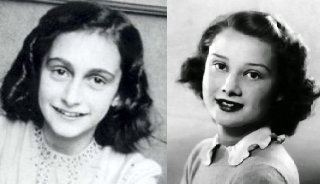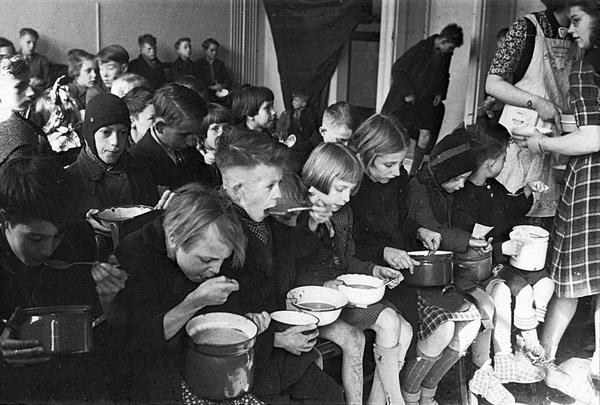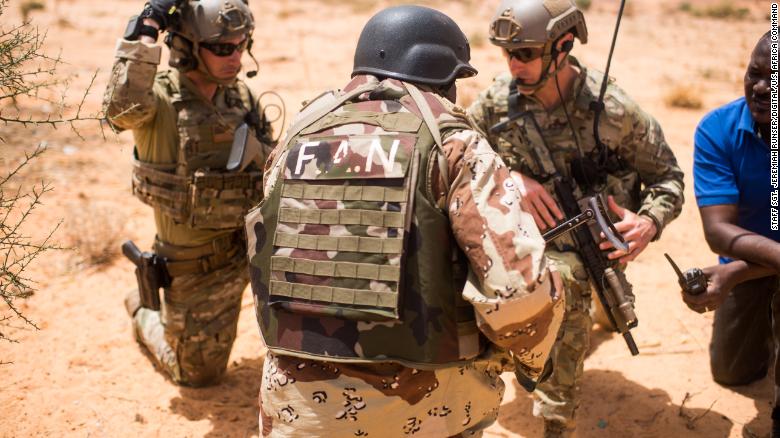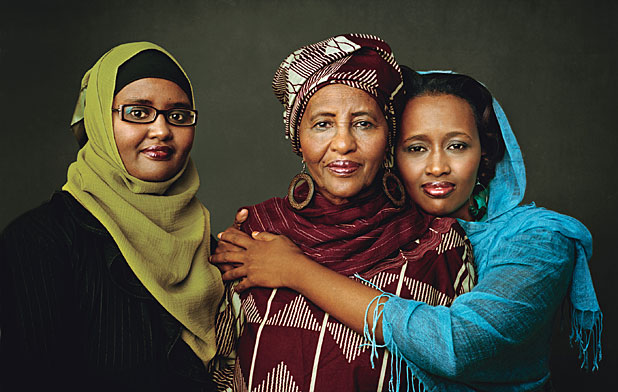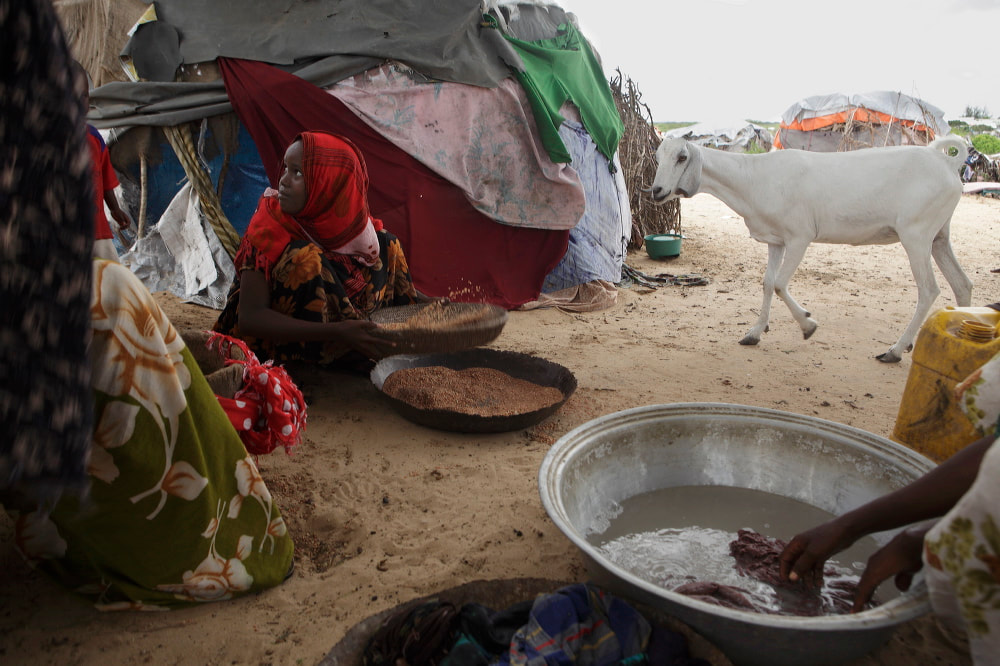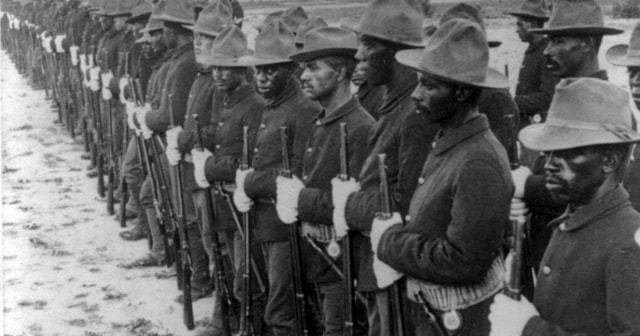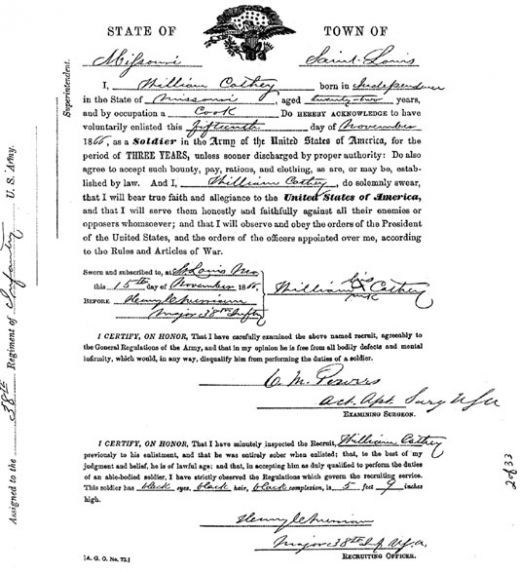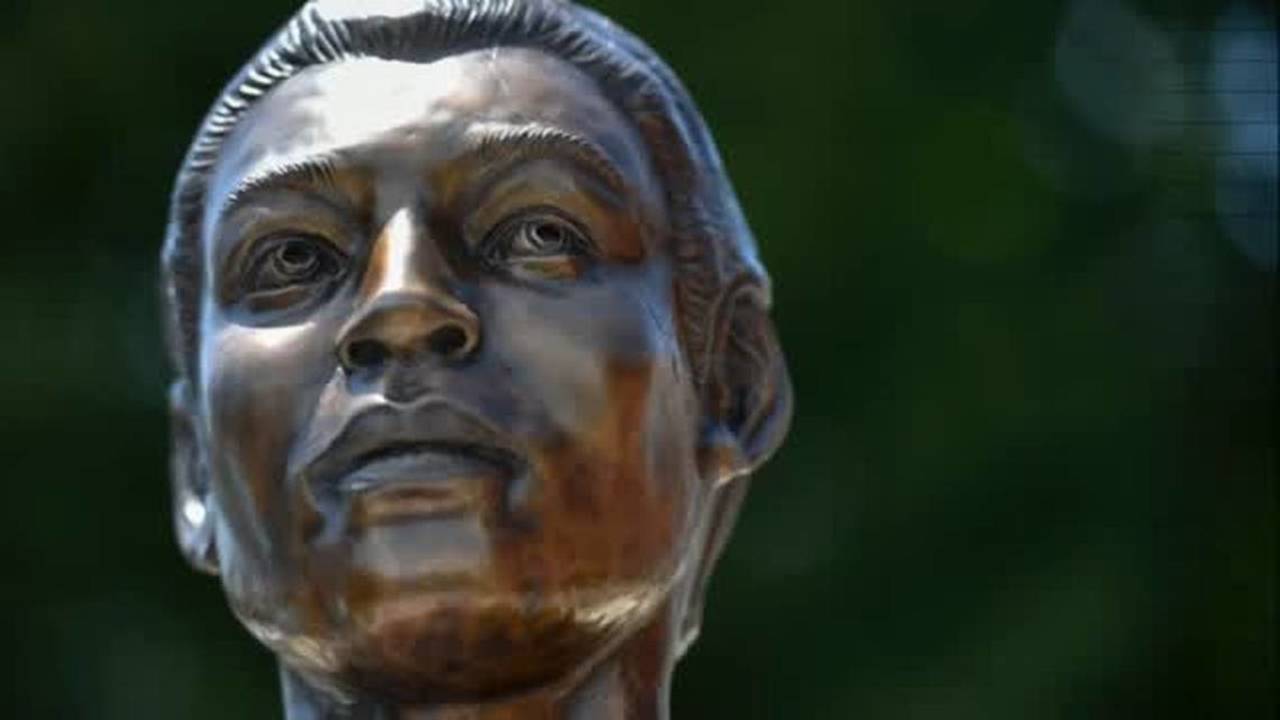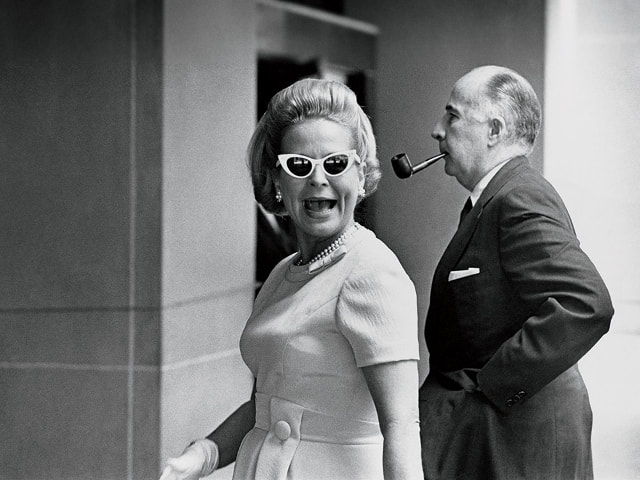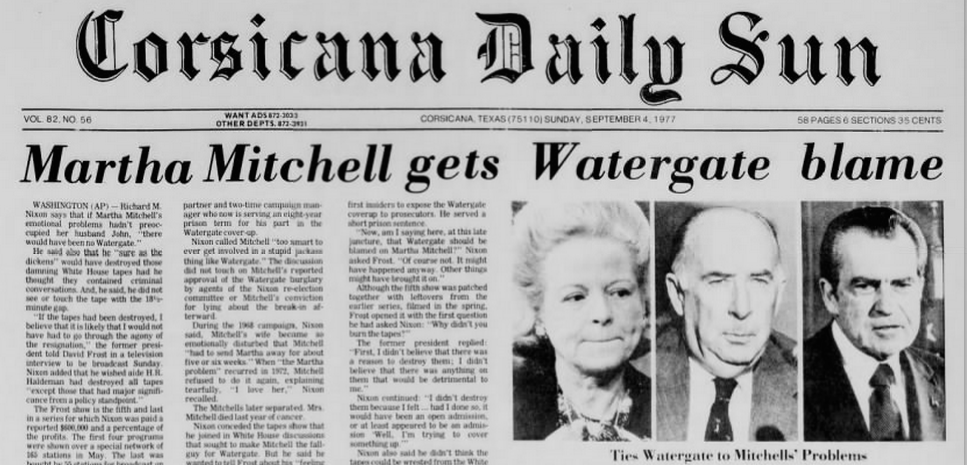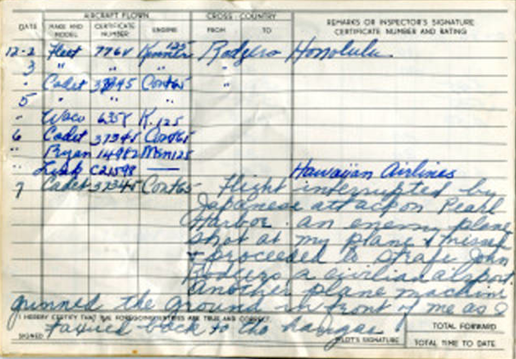|
One of the things that fascinates me is the discovery of historical details and connections that add layers of meaning to our understanding, and to the stories we tell about the past. Recently, I learned of the threads that connect Audrey Hepburn and Anne Frank. The girls were born within one month of each other in 1929, Anne in Germany and Audrey in Belgium. Audrey lived with her English-Austrian father in England for several years, but by the time the war broke out, both girls had moved to the Netherlands, where they ended up living just miles apart. After Nazi Germany invaded Holland in the spring of 1940, Jewish Anne Frank would become known to the world for the diary she wrote while hiding for her life. She would die in a Nazi death camp. Audrey Hepburn's parents supported Adolf Hitler, her father an agent for the Nazi regime, her mother an admirer of the Fuhrer. But Audrey joined the resistance and suffered near starvation under German occupation resulting in her often-admired slender figure, famous in the movies Roman Holiday and Breakfast at Tiffany's. At the end of World War II and the Netherlands' Hunger Winter, Audrey, aged sixteen, stood five foot six, but weighed only 88-pounds. She was one of the first to read Anne Frank's diary, but asked to play in a movie based on Diary of a Young Girl, Audrey declined the role, saying it was too painful. Her son Luca Dotti told People Magazine his mother knew passages of Anne Frank's diary by heart. “My mother never accepted the simple fact that she got luckier than Anne. She possibly hated herself for that twist of fate.” Audrey Hepburn's British-Austrian father and Dutch Baroness mother both held fascist sympathies in the 1930s. Ella van Heemstra had a private meeting with Adolf Hitler, where, to the Baroness's bliss, the Nazi leader kissed her hand. 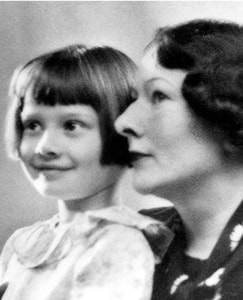 Audrey Hepburn and her mother Ella Van Heemstra Audrey Hepburn and her mother Ella Van Heemstra Audrey's father left the family before the war, and apparently in 1942, her mother had a change of heart about Hitler after the Nazis executed her sister's husband. Otto van Limburg Stirum was arrested in retaliation for sabotage by the resistance movement. He and four others were driven to a forest, made to dig their own graves and then shot. Before that, the realities of the war had come gradually to Audrey. “The first few months we didn’t know quite what had happened … I just went to school,” Hepburn said. “In the schools, the children learned their lessons in arithmetic with problems like this: ‘If 1,000 English bombers attack Berlin and 900 are shot down, how many will return to England?’" 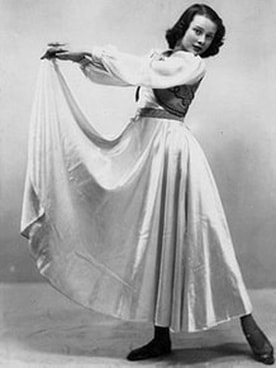 Audrey had started to learn ballet as a young girl in England, and as conditions became strained and dangerous, she turned back to dance to relieve the pressure of Nazi rule. "When I would go to the station, there were cattle cars packed with Jewish families, with old people and children,” Hepburn once said. “We did not yet know that they were traveling to their deaths. People said they were going to the ‘countryside.’ It was very difficult to understand, for I was a child. All the nightmares of my life are mixed in with those images.” A quiet, withdrawn child, Audey bloomed on the stage and soon began to perform at illegal events in hidden venues with the windows blacked out. These by-invitation-only zwarte avonden, black evenings, raised money for the Dutch Resistance. “Guards were posted outside to let us know when Germans approached,” Hepburn would later say. “The best audiences I ever had made not a single sound at the end of my performance.” Audrey Hepburn Aides Nazi Resistance Audrey also helped deliver tiny-sized copies of a resistance newspaper, Oranjekrant. “I stuffed them in my woolen socks in my wooden shoes, got on my bike and delivered them.” As a teenager, she avoided the suspicions of police and was also able to carry messages and food to Allied pilots shot down over the Netherlands in 1944. Though Audrey's mother had been known as a lipstick Nazi for being friendly with German soldiers early in the war, she sheltered an English pilot in their home. Luca Dotti wrote that it was a thrilling experience for Audrey. "It was risky, he was a stranger in uniform, a savior, and therefore a knight and hero. [But] if you were caught hiding an enemy, the whole family would be taken away.” Dutch people in the countryside felt the deprivations of war acutely in the winter of 1944-45, later known as Hongerwinter, Hunger Winter. Families went without heat and electricity and food grew scarce. Audrey sometimes didn't eat for as long as three days, and sometimes subsisted on bread made from brown beans and potatoes. According to Hepburn's son, “Twenty two thousand people died from hunger in Holland during the final months of World War II, my mother escaping death by a hairbreadth.” Audrey's town was finally liberated by Allied troops in spring 1945. 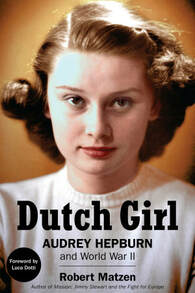 Throughout her life, Audrey Hepburn spoke very little about the war years, some say out of fear that her parents' Nazi sympathies might harm her acting career. A good number of books have told the story of Audrey Hepburn's movie star career, jet-setting life and generosity as an ambassador for UNICEF. But a new biography out this month focuses specifically on her life during World War II. I wrote about new evidence concerning the arrest of Anne Frank's family here... Sources: Audrey at Home, Memories of Mother's Kitchen by Luca Dotti https://infosurhoy.com/cocoon/saii/xhtml/en_GB/news/how-audrey-hepburn-feared-her-moms-admiration-of-adolf-hitler-would-break-her-profession/ https://forward.com/schmooze/422225/why-audrey-hepburn-refused-to-play-her-soul-sister-anne-frank/ https://people.com/celebrity/audrey-hepburns-personal-connection-to-anne-frank/ Did you know the Trump Administration is escalating our war in Somalia? I must admit, I didn't know we had a war in Somalia. It's part of the War on Terrorism, and it shakes out to at least 500 troops on the ground in Somalia, and increasing numbers of air strikes over the the last two months. The attacks killed 225 people in January and February, according to the New York Times, compared to 326 in all of 2018. Of course, these air strikes are targeting bad guys, al Qaeda Shabaab insurgents, and supporting good guys, the U.N.-backed Somalian government troops. Shortly after President Trump took office, he declared Somalia an “area of active hostilities” subject to war-zone rules. This designation allows the U.S. military to readily attack Shabab militants, including foot soldiers with no special skills or role, and it permits the killing of civilian bystanders. Four people died in a U.S. assault March 10th, 2019, according to a relative of one of the victims. The relative told Reuters one of those killed was an employee of the firm Hormuud Telecom. The U.S. Africa Command acknowledged it carried out the air strike on Sunday, saying that three militants had died in the attack, as well as three separate attacks in a five-day stretch of February killing 35, 20 and 26 people. More on the war in Somalia here. The Shabab have proved resilient against the American airstrikes, and continue to carry out regular bombings in East Africa, and the stepped-up attacks are exacerbating the humanitarian crisis in Somalia. Why all the bad news? Why all this bad news? Just setting the stage for this feature story. In the midst of decades of violence, drought and famine in Somalia, there's one woman who's been making enemies peaceful, feeding the hungry and standing up to al Qaeda like a one woman army. Her name is Dr. Hawa Abdi, the saint Rambo comparison came from Glamour Magazine, when it named Dr. Abdi Woman of the Year in 2010, along with her two daughters, also doctors in Somalia. 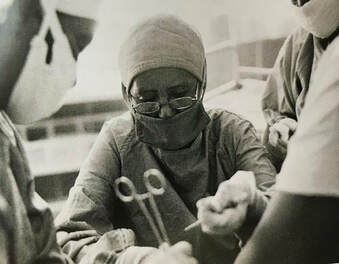 In the refugee camp where Dr. Abdi convinced enemies to lay down their grudges, she called simply "Mama Hawa". "They are very angry and mentally not [there] when they are coming to you," Abdi she told NPR. "Their parents or their brothers, their wives, their fathers were killed in front of them. They're coming to me. There is no government. The whole society became violent." Dr. Abdi became one of Somalia's first female gynecologists in 1971, after medical school in the Soviet Ukraine. She worked in Mogadishu’s largest hospital until 1983, when she left, deciding she wanted to provide free medical care to dirt-poor women who would never be able to afford having a baby in a hospital. "I decided to open my own clinic next to our family’s home in a rural area, 15 miles from the capital. Within a few months, I was seeing 100 patients a day." When the country exploded in civil war in 1991 and the Somalian government collapsed, Dr. Abdi's clinic and her home turned into a triage center. Hundreds, than thousands of people, mostly women and children, settled in temporary shelter in the doctor's family's ancestral lands surrounding the clinic. Dr. Abdi sold her family’s gold to buy food to keep the children alive and give adults the strength to dig graves. We clung to one another and we survived, but the fighting continued," said Dr. Abdi. 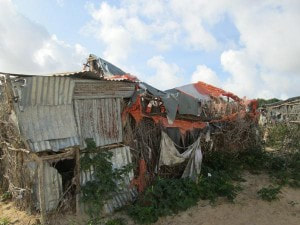 For the following two decades, destruction, violence, drought and famine ravaged her homeland and Dr. Abdi raised her own children while providing a safe haven for refugees. Her one-room clinic became a 400 bed hospital, and her thousand-acre farm a displaced person camp. She worked 12-hour days, 7 days a week, delivering babies, treating gunshot wounds, and providing IV lines of nourishment to starving children. By 2010, With help from the U.N. "Hawa's Camp" was providing food, clean water, and shelter to 90,000 refugees. Dr. Abdi had two strict rules to preserve the peace. First, no one is allowed to talk about clan or family, the most divisive issue in Somalia. Second, men are not allowed to beat their wives. Though conditions have improved in the camp, Somalia remains wracked by war and over the years local warlords tried to shut her operation down at gunpoint They've blocked aid, raided her camp with machine guns, and threatened her life several times. In May 2010 Islamist militants arrived at the gate, demanding Dr. Abdi turn over management of the hospital and camp to them, as women are not allowed to hold positions of power under their brand of Islam. She invited them to sit down to dinner. After eating, "Six Hizbul Islam soldiers, jittery, aggressive young men with -henna-dyed beards, wearing red-and-white checkered scarves, their index fingers forever on the triggers of their guns," ordered her to leave. Elders in the camp warned her she'd be shot, but Dr. Abdi stood up to the militants. "At least I will die with dignity," she said. "They did not shoot me; they pushed back their chairs and left." A week later they were back, 750-strong. This time they fired on the hospital and camp. "A BBC producer called me during some of the heaviest shelling," said Dr. Abdi. "I told him that the militiamen’s targets were the maternity and surgical wards, and the pediatric malnutrition section. One woman recovering from a C-section I’d performed earlier that day had stood up to run. "Terrified mothers detached feeding tubes and IV lines from their dehydrated children’s noses and arms to flee into the woods, away from the indiscriminate shooting. A group of militiamen stormed into my room. 'You’ve spoken to the radio, haven’t you?' shouted one." The armed men demanded her cellphone and and hauled Dr. Abdi and six nurses away, holding them hostage for ten hours. Then the gunmen returned her phone, saying. “You have many supporters,” and ordering her to call people to say she was alive and unharmed. The following day armed men appear to tell her not to re-open the hospital. She said she would not reopen without a written apology. “Dr. Hawa, you are stubborn,” one told her. “I do something for my people and my country,” she said. “What have you done for your people and your country?” A week later their second-in-command returned with a written apology. In 2012, Dr. Abdi was nominated for the Nobel Peace Prize. Today 850 young people attend school in the camp, and Mama Hawa insists that equal numbers of boys and girls go to school. Dr. Adbi now, in her early 70s, runs a foundation to raise money for operations, while the camp and hospital are run by her daughter, Deqo Mohamed, who also became a doctor. It's mission is to secure basic human rights in Somalia through building sustainable institutions in healthcare, education, agriculture, and social entrepreneurship. Sources: https://www.dhaf.org/our-story https://www.nytimes.com/2019/03/10/us/politics/us-somalia-airstrikes-shabab.html?module=inline http://www.asafeworldforwomen.org/womens-rights/wr-africa/wr-somalia/1039-dr-hawa-abdi-under-siege-in-somalia.html Here's a warm-up to get you excited for my new book. Standing Up Against Hate: How Black Women in the Army Help Change the Course of WWII tells the story of the first African American women to join in the U.S. army. At least I thought it did. Turns out a black woman soldier in the 1860s beat them to it. 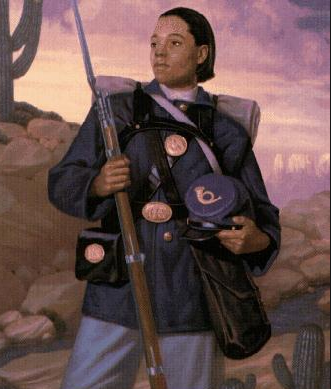 Painting by William Jennings, U.S. Army Profiles of Bravery Painting by William Jennings, U.S. Army Profiles of Bravery Cathey Williams disguised herself as a man and enlisted in Company A of the Thirty-Eighth Infantry Regiment in St. Louis, November 1866. She switched her name to William Cathey, and after what must have been a cursory exam, the army surgeon declared her fit for duty. Private Cathay was 22-years-old and had actually been serving as an cook for the army throughout most of the civil war. Cathey told her story to a reporter for the St. Louis Daily Times in 1875. "My Father a was a freeman, but my mother a slave....While I was a small girl my master and family moved to Jefferson City, [Missouri]....When the war broke out and the United States soldiers came to Jefferson City they took me and other colored folks with them to Little Rock. Col. Benton of the 13th army corps was the officer that carried us off. I did not want to go. He wanted me to cook for the officers, but I had always been a house girl and did not know how to cook." She had little choice. She learned to cook. At sixteen, swallowed by the union army, Cathey saw the Battle of Pea Ridge, a major battle of the Civil War fought near Leetown, northeast of Fayetteville, Arkansas, after which her unit traveled to Louisiana. "I saw the soldiers burn lots of cotton and was at Shreveport when the rebel gunboats were captured and burned on Red River." As a servant under General Phillip Sheridan, Cathey saw the soldiers' life on the front lines as his army marched on the Shenandoah Valley. After the war, African American soldiers were posted to the Western frontier, where they battled Native Americans to protect settlers, stagecoaches, wagon trains and railroad crews. They became known as “Buffalo Soldiers,” apparently so-named by Native Americans, though history's a little thin on when and why. After working for the army throughout the war, it's little wonder Cathey came up with the scheme to enlist as the fighting came to a close. With cunning and courage she found a way to survive when opportunities for black women were few to none. As a Buffalo Soldier, Cathey learned to use a musket, stood guard duty and went on scouting missions. After serving at Fort Riley, Kansas for some months, her company marched 563 miles to Fort Union, New Mexico. Official reports show Buffalo Soldiers were often sent to the most bitter posts and suffered racist officers, severe discipline and crummy gear, food and shelter. In two years of service, mostly in New Mexico, Cathey needed hospital care four different times for illnesses ranging from "the itch" to rheumatism, yet maintained her secret. Cathey enlisted for three years, but after two, she was tired of army life and wanted out. She told the St. Louis reporter, “I played sick, complained of pains in my side, and rheumatism in my knees. The post surgeon found out I was a woman and I got my discharge." All indications are that she was a good soldier. After her honorable discharge, Cathey worked as a civilian cook and washer woman. Until she could not longer work due to diabetes and nerve pain which required the amputation of her toes. She was unable to walk without a crutch.
In 1891, Cathey petitioned for a veterans pension and benefits. The government rejected her claim, not because she was a woman, that was never argued. The army doctor who examined her found her to be fit, not disabled enough for benefits. There's no record of the life or death of Cathey Williams following that denial of benefits. Sources: http://blackhistorynow.com/cathay-williams/ http://www.buffalosoldier.net/CathayWilliamsFemaleBuffaloSoldierWithDocuments.htm 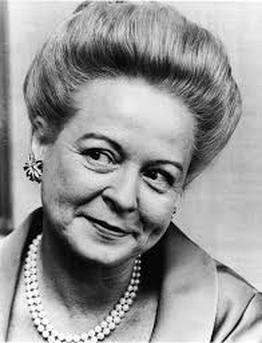 In the Nixon Era, Republicans discounted Martha Mitchell's accusations, saying she was mentally unstable. Her attacker got promoted and President Trump recently promoted him again. In voting to confirm Judge Brett M. Kavanaugh to the Supreme Court, the swing voters said the same thing about Christine Blasey Ford. They just used more subtle phrasing. They implied she had been so traumatized she couldn't tell what was real and what was not. Nothing has changed but the excuses people use to justify discounting women's stories, and the science that would support them. Richard Huganir, a neuroscientist at Johns Hopkins School of Medicine says trauma would only help a woman remember an attack more clearly. “The person lying on top of you — who she’d previously met — you’re not going to forget that,” he told the Washington Post. “There’s a total consensus in the field of memory ... If anything, fear and trauma enhances the encoding of the memory at a molecular level." It's the reason people never forget details of where they were on 9/11, or the day President John F. Kennedy was shot. Martha and John Mitchell came to the white house from Arkansas in President Richard Nixon's first term, he as attorney general. She publicly and loudly supported the president for a second term as her husband took over the president's re-election campaign. 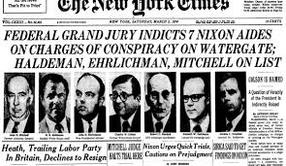 But then Martha began to suspect Nixon's men were up to "dirty tricks." She listened in on her husband's meetings with Nixon, and concluded members of the campaign were acting illegally. Martha had always spoken her mind; the press had dubbed her "mouth from the south." She complained about the label, which wasn’t applied to men in Washington. “Why do they always call me outspoken? Can’t they just say I’m frank?” She asked. The name calling got worse. The night arrests in the Watergate break-in hit the news, Martha called reporter Helen Thomas of United Press International to say she thought her husband and the president were somehow involved. The phone call was suddenly cut short. According to Thomas, “…it appeared someone took away the phone from her hand." She heard Martha say, ‘You just get away.’” Thomas said she called back and the hotel operator told her, “Mrs. Mitchell is indisposed and cannot talk.” 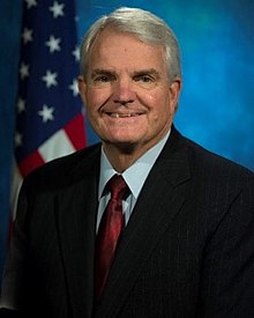 Martha later charged an FBI agent named Stephen King ripped the phone from her hands and subsequently threw her down and kicked her to keep her from making any phone calls. She says under orders from her husband she was locked in her room incommunicado for 24-hours. She was given alcohol, but no food. This seems like a good point in the story to introduce Stephen King (shown at left). After Nixon was re-elected in 1972, King left the FBI for private industry. Then last year, he was appointed Ambassador to the Czech Republic by Donald Trump. During his confirmation hearings, no questions came up about allegations he helped in the Watergate cover-up, or that he assaulted a woman to that end. Martha Mitchell claimed King held her prisoner despite a number of escape attempts. When she tried to exit through a glass door they got into a tussle that broke the glass and her hand was cut so badly she required six stitches. Martha said a doctor was finally summoned to aide King in keeping her a prisoner. King forced Martha onto the bed and held her down while the doctor removed her pants and gave her a shot of tranquilizer. A reporter who spoke with Martha after she was released described her as “a beaten woman,” with “incredible" black and blue marks on her arms. As Nixon fought for his office and reputation, his administration briefed the press about the Martha's lack of credibility. She was portrayed as a paranoid, publicity-seeking and, possibly alcoholic, housewife. Rumors spread that she had been institutionalized for insanity. 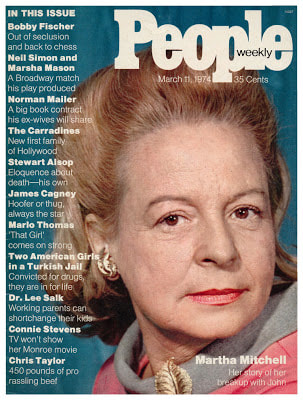 Martha wanted Nixon to fire Steve King, but the agent was promoted to chief of security. After leaving the FBI he went on to a lucrative career in chemical manufacturing. Arriving in Prague, last December, to take up duties as Trump's Ambassador to the Czech Republic, King told Radio Free Europe reporters, "I was there when this matter occurred [with Martha Mitchell]....But I have chosen -- then and now -- not to really speak to it specifically only out of respect to the Mitchell family, those that survive today." Nixon himself said, “If it hadn’t been for Martha Mitchell, there’d have been no Watergate [scandal].” Scandal, he means. But by the time he resigned in August of 1974, Martha's marriage had crumbled, she appeared to have possibly had an emotional breakdown and had suffered embarrassing publicity. So far, the only justice for Martha has been in the form of recognition by the mental health community. Harvard psychologist Brendan Maher encountered mental patients incorrectly diagnosed as being delusional, when it turned out their "delusions" were true. He named this the Martha Mitchell Effect. The effect is not a mental problem of the patient, but a mental block on the part of the psychiatrist. Seems like today we have a mental block on the part of half the senators in Washington. Thanks to YA Author Jody Casella for telling me about Martha Mitchell. Another courageous woman whose story I had not known. 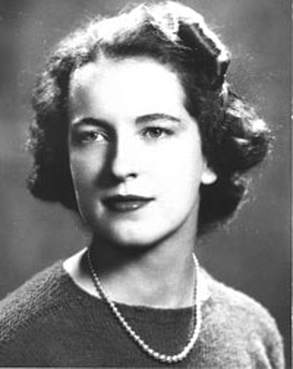 Cornelia Fort was born to wealth and privilege, but in a time and place that prescribed her a very narrow role in life. Yet she made bold choices push boundaries and lived of life of daring and adventure few women would even dream of. Would she have made the same choices, if she'd known it would lead to hear at 24? Growing up in a luxurious mansion built in 1815 on the banks of the Cumberland River in Tennessee, she was expected to become a Southern debutante, attend society functions, marry and have children. At eighteen, Cornelia wanted to attend Sarah Lawrence College where young women could design their own course of study. Her father at first refused to allow her to apply to that "liberal northern school" and she was sent to Ogontz School for Young Ladies. In her first major rebellion against the "proper" role assigned to her, Cornelia got her mother to help change her father's mind. She was finally allowed to leave the "oppressive atmosphere" and transfer to Sarah Lawrence, where she graduated with a two-year degree. Cornelia's next bold move challenging the strictures of women's lives in the 1940s, 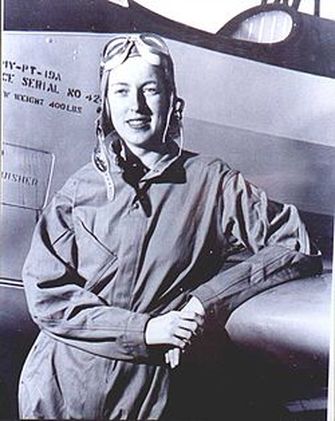 At age five, with her father and three older brothers, Cornelia saw a daring pilot perform acrobatics in the sky. It appeared so dangerous, Dr. Rufus Fort made his sons promise ( as one story goes, swear an oath on the family bible) they would never fly. Later, when Cornelia made her first solo flight, one brother chided her for breaking a promise to their father. But Dr. Fort had not thought to ask his daughter not to fly. She was hooked from her very first time in the sky, saying “It gets under your skin, deep down inside.” Cornelia Fort became the first female flying instructor in all of Tennessee in 1940. The next year she got a job in Hawaii teaching defense workers, soldiers and sailors to fly. In November 1941, Cornelia wrote home (her father had died more than year before). "If I leave here, I will leave the best job that I can have (unless the national emergency creates a still better one), a very pleasant atmosphere, a good salary, but far the best of all are the planes I fly. Big and fast and better suited for advanced flying. On December 7, 1941, she was in the sky with a student pilot when a small plane nearly collided with them. Cornelia grabbed the controls and saved their lives. Later, she said the plane “passed so close under us that our celluloid windows rattled violently and I looked down to see what kind of plane it was. The painted red balls on the tops of the wings shone brightly in the sun. I looked again with complete and utter disbelief. Honolulu was familiar with the emblem of the Rising Sun on passenger ships but not on airplanes.” “Then I looked way up and saw the formations of silver bombers riding in. Something detached itself from an airplane and came glistening down. My eyes followed it down, down, and even with knowledge pounding in my mind, my heart turned convulsively when the bomb exploded in the middle of the harbor. I knew the air was not the place for my little baby airplane and I set about landing as quickly as ever I could. A few seconds later a shadow passed over me, and simultaneously bullets spattered all around me.” See below the entry in Cornelia's logbook for that flight “Later, we counted anxiously as our little civilian planes came flying home to roost. Two never came back. They were washed ashore weeks later on the windward side of the island, bullet-riddled. Not a pretty way for the brave yellow Cubs and their pilots to go down to death.” Cornelia survived. And then stepped out of bounds again. She knew the risks when she became one of the first to volunteer for Women’s Auxiliary Ferrying Squad (WAFS) “I felt I could be doing something more constructive for my country than knitting socks. Better to go to war than lose the things that make life worth living.” 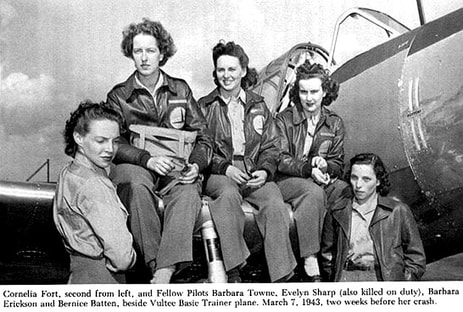 “Because there were so many disbelievers in women pilots, especially in their place in the army....We had to deliver the goods or else. Or else there wouldn’t ever be another chance for women pilots in any part of the service.” The WAFS ferried planes for the U.S. military during WWII, flying them from factories to points of embarkation. The group later merged with the Women Airforce Service Pilots (WASP). The women pilots faced painful prejudice from some of the male pilots, who Cornelia said went "to great lengths to discredit them whenever possible.” The end came quickly, and far to soon. March 21, 1943, flying over Texas in a six-plane formation, Cornelia's Fort's wing tip was clipped by another plane. She crashed to the ground and died instantly. Cornelia was twenty-four, and became the first female pilot in American history to die in the line of duty, though the WAFS were not recognized as official military service members 1977. 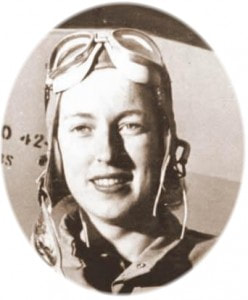 A year prior to her death, Cornelia had written her mother, poetically describing how much she had loved life, loved green pastures and cities, sunshine on the plains and rain in the mountains, blue jeans, red wine, books, music and the kindness of friends. She wrote: If I die violently, who can say it was "before my time"? I should have dearly loved to have had a husband and children. My talents in that line would have been pretty good but if that was not to be, I want no one to grieve for me. I was happiest in the sky--at dawn when the quietness of the air was like a caress, when the noon sun beat down and at dusk when the sky was drenched with the fading light. Think of me there and remember me...Love, Cornelia. Cornelia's story reminds me we do not have time to be mired in self-doubt and regret. We make the best decisions we can without the benefit of knowing how they will unfold. Like Cornelia, I want to choose boldly and love life hugely. What about you? |
I'm fascinated to discover little-known history, stories of people and events that provide a new perspective on why and how things happened, new voices that haven't been heard, insight into how the past brought us here today, and how it might guide us to a better future.
I also post here about my books and feature other authors and their books on compelling and important historical topics. Occasionally, I share what makes me happy, pictures of my garden, recipes I've made, events I've attended, people I've met. I'm always happy to hear from readers in the blog comments, by email or social media. Archives
September 2023
Categories
All
|
